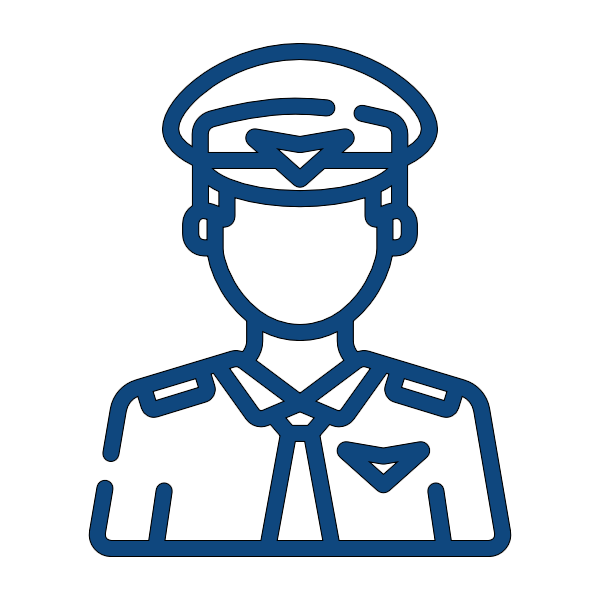Fear of Flying Courses

At JetEx, we provide a straightforward and practical fear of flying session designed to help you build the confidence to fly. In a safe and controlled environment, you'll be guided by a highly experienced commercial pilot as you confront and manage your flight-related anxieties.
Our Fear of Flying sessions are priced at £320 and last around two hours. You'll spend at least one hour in our full-motion flight simulator, with the remaining time dedicated to a supportive pre- and post-flight briefing with your pilot. The session is designed to move at your pace, ensuring you feel comfortable, informed, and fully supported throughout.
The JetEx 737 full-motion flight simulator is exceptionally well-suited for fear of flying courses, offering a highly realistic flying experience in a completely safe, ground-based environment. The advanced motion platform can accurately simulate various levels of turbulence—one of the most common concerns among individuals with a fear of flying—allowing participants to experience and better understand these sensations in a controlled and supportive setting.
Supportive Elements

Pre- and post-flight briefings with a professional airline pilot

Minimum of 1 hour in the full motion simulator, with your pilot

You take the controls, flying the plane without leaving the ground
Features of Our Flight Simulator
Frequently Asked Questions
What is the root cause of fear of flying?
Fear of flying can stem from various factors, such as turbulence, lack of control, or previous negative experiences. Understanding these triggers is crucial in addressing and overcoming the fear effectively.
How can fear of flying courses help individuals?
Fear of flying courses offer structured guidance, coping strategies, and support to gradually desensitise individuals to their fears. They provide a safe environment for participants to learn about aviation safety and manage anxiety during flights.
Can specific fears within flying be addressed through these courses?
Yes, fear of flying courses often delve into specific concerns like turbulence, take-off/landing procedures or claustrophobia. By understanding and addressing these individual fears within the course framework, participants can work towards conquering them.
Is the simulator really "full motion"?
Yes, our 737 simulator is a true full motion simulator capable of accelerating you at over nine metres per second, per second in all six degrees of motion. There's very little difference between what you feel in the sim and a real 737!
Where can I fly?
From / to any current airport. Our flight simulation software has a database of over 24,000 airports, although some airport and scenery areas are more detailed than others.
What happens during my flight?
There is no limit to what you can do during your flight: take-offs, landings, circuits, bad weather, engine failures, even stalls, all in complete safety of course. Just let us know what you'd like to experience, and we'll tailor your time in the sim so you can get the most fun out of it.
Still got questions? There are more questions & answers on our main FAQ page.
Ready to fly?
We offer a whole range of flight simulator experiences that everyone can enjoy, whether you're a complete flying novice or an experienced pilot looking to get familiar with the 737.
Addressing Specific Fears Within Flying
Turbulence is a common worry for those with a fear of flying. Understanding why it happens, such as air currents or weather conditions, can help reduce anxiety. Learning about how planes are designed to withstand turbulence can also provide reassurance.
Aircraft stability plays a crucial role in ensuring a smooth flight experience. Knowing that pilots are trained to navigate through turbulence safely and that modern aircraft are built to handle various weather conditions can ease concerns related to turbulence.
Turbulence Concerns
Managing Claustrophobia and Takeoff/Landing Fears
For individuals struggling with claustrophobia during flights, practising controlled breathing exercises or engaging in distractions like reading or listening to music can help manage feelings of confinement within the aircraft cabin.
Understanding the mechanics behind takeoffs and landings is key in addressing fears associated with these flight phases. By learning about the procedures involved and familiarising oneself with the sounds and sensations during takeoff and landing, passengers can feel more at ease during these critical moments.
Understanding Fear of Flying

Fear of flying is a prevalent phobia that affects numerous individuals. It can trigger intense anxiety and panic in those who experience it, making air travel challenging for them.
Understanding the root causes behind this fear is crucial to help individuals overcome it. Factors such as past traumatic experiences, fear of heights or enclosed spaces, or a lack of understanding about how planes work can contribute to this phobia.
Research shows that around 1 in 6 people have a significant fear of flying. This fear can manifest differently in each individual, ranging from mild discomfort to severe panic attacks when faced with the prospect of boarding an aircraft.
Common phobia
Overcoming fear

Taking a fear of flying course is one effective way for individuals to address their anxieties and learn coping mechanisms. These courses often include education about flight safety procedures, exposure therapy where participants gradually confront their fears, and relaxation techniques like deep breathing exercises.
Entering our simulator as part of your fear of flying course will allow you to learn more about how planes work - what happens, for example, when you raise or lower the flaps together with the noises and feelings that go along with that.
You'll also get the opportunity to take the controls - an experience that can really transform the management of your fear.



